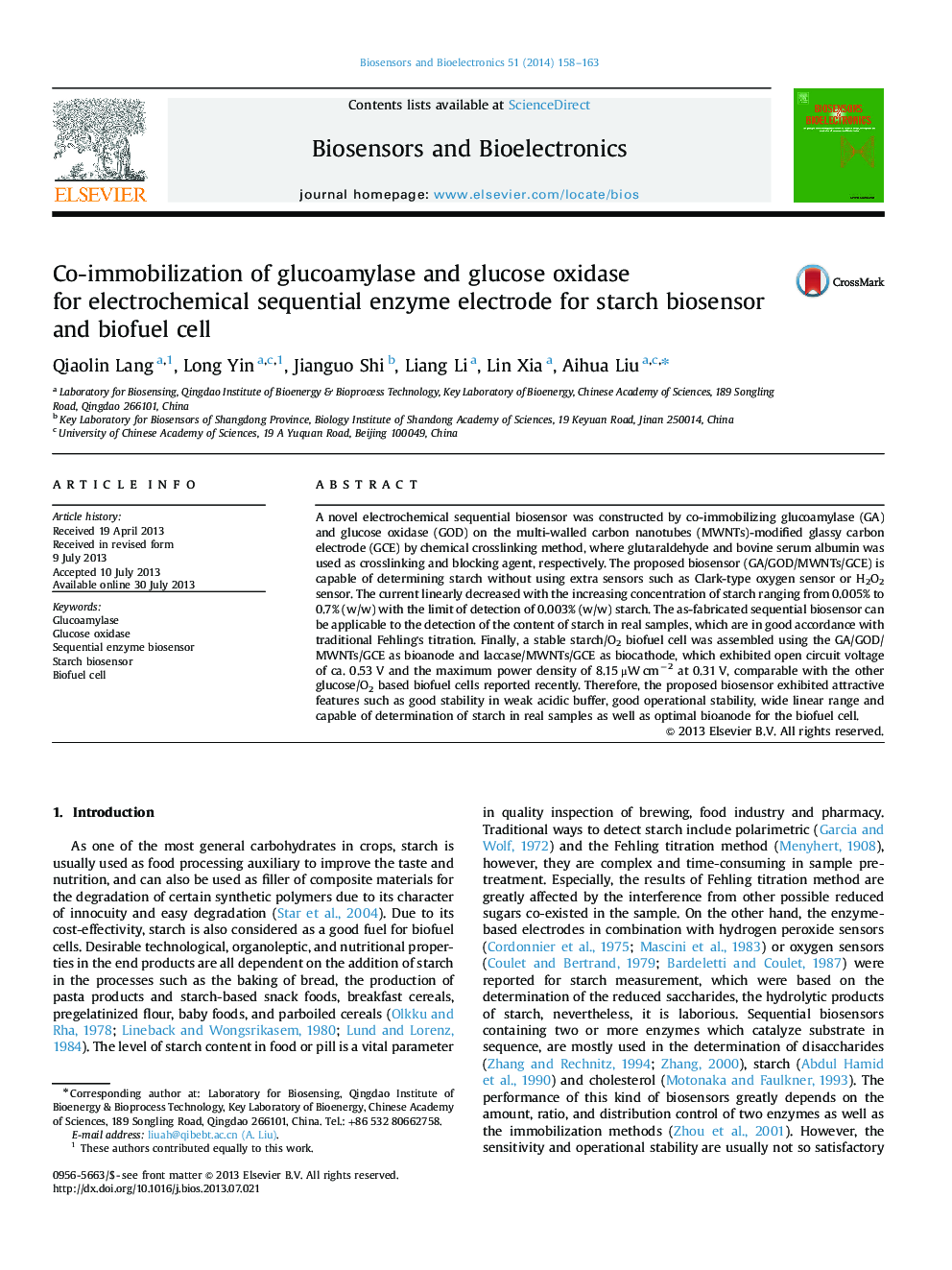| Article ID | Journal | Published Year | Pages | File Type |
|---|---|---|---|---|
| 866561 | Biosensors and Bioelectronics | 2014 | 6 Pages |
•Electrochemical starch sequential biosensor by co-immobilizing glucoamylase and glucose oxidase.•Detection of starch with high sensitivity and stability, without using either Clark-type oxygen sensor or H2O2 sensor.•Sequential-enzyme-based biofuel cell using inexpensive starch.
A novel electrochemical sequential biosensor was constructed by co-immobilizing glucoamylase (GA) and glucose oxidase (GOD) on the multi-walled carbon nanotubes (MWNTs)-modified glassy carbon electrode (GCE) by chemical crosslinking method, where glutaraldehyde and bovine serum albumin was used as crosslinking and blocking agent, respectively. The proposed biosensor (GA/GOD/MWNTs/GCE) is capable of determining starch without using extra sensors such as Clark-type oxygen sensor or H2O2 sensor. The current linearly decreased with the increasing concentration of starch ranging from 0.005% to 0.7% (w/w) with the limit of detection of 0.003% (w/w) starch. The as-fabricated sequential biosensor can be applicable to the detection of the content of starch in real samples, which are in good accordance with traditional Fehling's titration. Finally, a stable starch/O2 biofuel cell was assembled using the GA/GOD/MWNTs/GCE as bioanode and laccase/MWNTs/GCE as biocathode, which exhibited open circuit voltage of ca. 0.53 V and the maximum power density of 8.15 μW cm−2 at 0.31 V, comparable with the other glucose/O2 based biofuel cells reported recently. Therefore, the proposed biosensor exhibited attractive features such as good stability in weak acidic buffer, good operational stability, wide linear range and capable of determination of starch in real samples as well as optimal bioanode for the biofuel cell.
